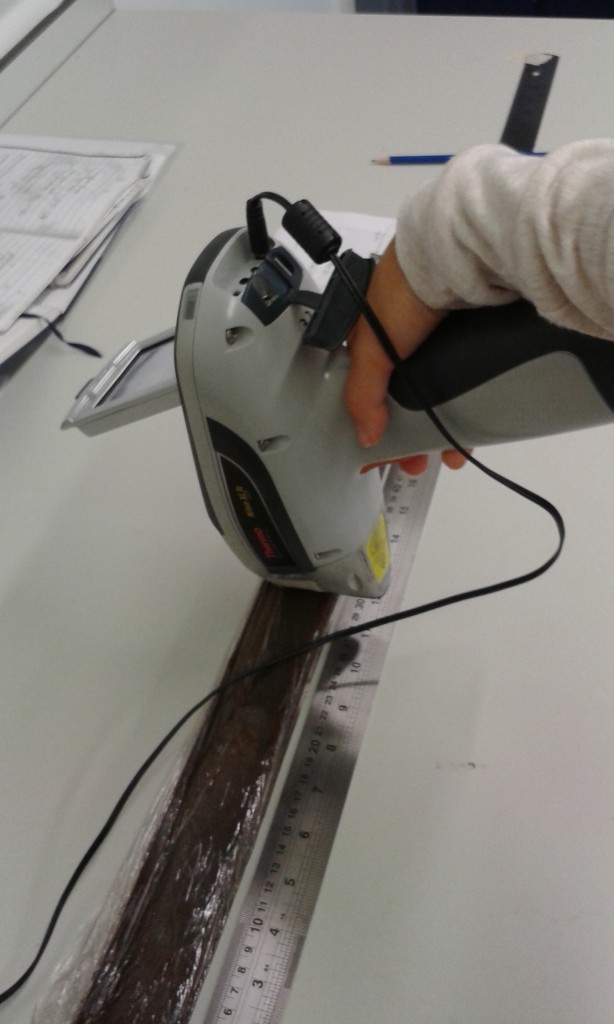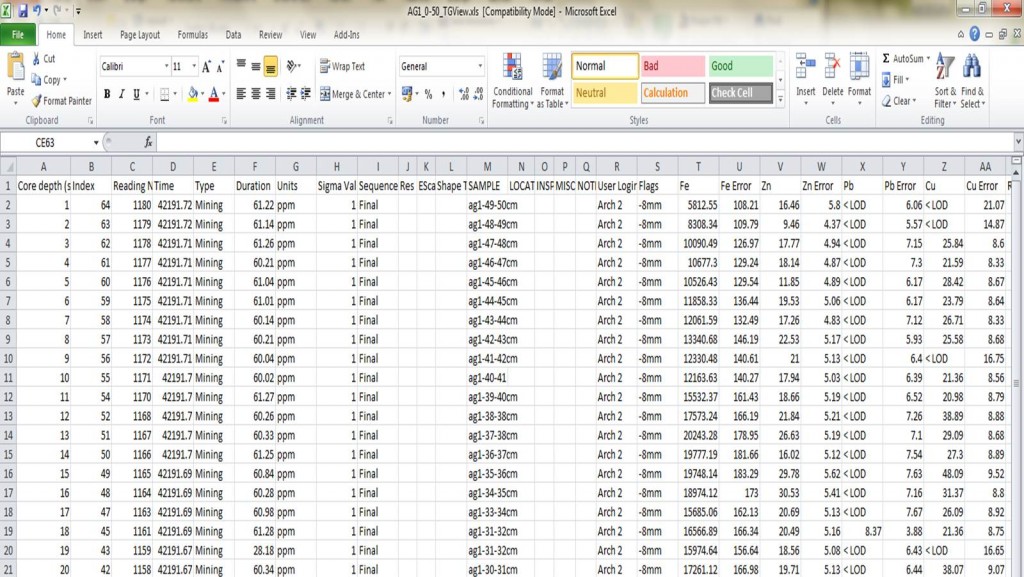Our quest for understanding the past, using sediments pushes us to find ways to extract the information in what is sometimes quite an exotic manner, as well as making us visit unexpected and fun places (soon to come, a blog post about the places we have visited lately in our field trips). Here is an example of the fun things we get to do.
No blood involved
One fun activity we have been doing is: holding a gun. Not any gun, but a galactic-looking laser-shooting one. I am talking about the portable x-ray fluorescence (XRF) analyser (Thermo), a fantastic piece of technology that allows us to analyse a wide range of elements from the Periodic Table (Figure 1). The gun is very easy to use, with touch-screen and flexibility to customise it, depending of the nature of your sediments. Beware that, because of the nature of this piece of kit, you will need to undertake training in radiation. And: make sure that if you are using it in hand-held format for long periods, that you have strong biceps!

Figure 1. The portable x-ray fluorescence (XRF) analyser (Thermo) in action. Russian core being measured.
Results from this technique have several applications that go from cross-correlating cores within a site to understanding the past environmental characteristics and deposits of the sediments. The fast processing time and resolution available with this method (1cm) enable results to be obtained very quickly, and allow one to understand the nature of the sediments in a non-destructible way (which is very much appreciated when you have only small volumes of sediments at your disposal with Russian cores!). The results can be imported into the computer and easily opened in an excel spread sheet (Figure 2).
Next steps will be correlating the XRF results with other analyses, such as magnetic susceptibility and pollen analysis. I am really looking forward to seeing what these multi-proxy analyses reveal.




Pingback: Jê Landscapes of Southern Brazil Studying Je sediments with a gun